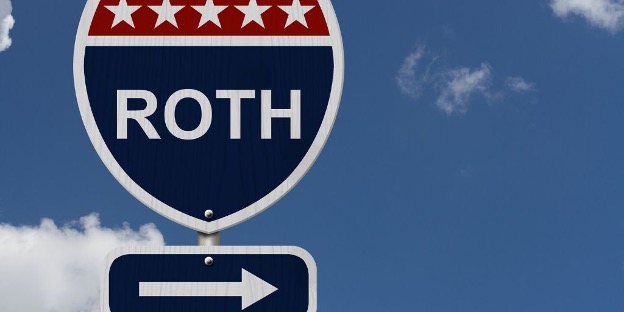By Tricia Lepofsky, ChFC®
Mega backdoor Roths and partial Roth conversions became the talk of the town when the first draft of the Build Back Better Act included provisions that would eliminate these strategies for high-income families. Though the bill ultimately became the Inflation Reduction Act and did not include the original Roth provisions, it doesn’t mean future legislative developments couldn’t happen. Here is everything you need to know about using the mega backdoor Roth and partial Roth conversion strategies before it’s too late.
What Is the Mega Backdoor Roth?
The mega backdoor Roth is a savings strategy that allows you to circumvent the 2023 $6,500 annual contribution limit for Roth IRAs ($7,500 if over the age of 50), and instead use the after-tax contribution limit for employer 401(k) plans, which is $66,000 in 2023 ($73,500 if over the age of 50). (For 2022 those limits are $61,000 and $67,500, respectively.)
If you’re wondering how in the world such a huge loophole is possible, it helps to first understand the more basic concept of a backdoor Roth. In this strategy, you first contribute pre-tax funds (up to $7,500 for individuals over the age of 50) to a traditional IRA; you then convert those funds to a Roth IRA in order to take advantage of tax-free growth. Upon conversion, however, you owe tax on the original contributions as well as any earnings the plan has accrued. This is an up-front cost that you must pay in order to gain the Roth IRA advantages of:
- Tax-free growth
- Tax-free withdrawals
- No required minimum distributions (RMDs)
So, how does that apply to the mega backdoor Roth?
A mega backdoor Roth strategy utilizes the same basic principle of indirectly funding a Roth account. But in this strategy, you would use a 401(k) as the first step in the process instead of a traditional IRA.
In 2023, your total contributions to your 401(k), including pre-tax, after-tax, and employer matching, is $66,000 (or $73,500 for employees over 50). (For 2022 those limits are $61,000 and $67,500, respectively.) After you max out your pre-tax 401(k) contributions, you then contribute after-tax contributions up to the annual limit. Then you transfer the amount of your after-tax contributions to the Roth IRA, paying tax only on the pre-tax contributions and accrued earnings. Once converted, your funds will grow tax-free and avoid future RMD requirements.
What Are Partial Roth Conversions?
Partial Roth conversions are similar to backdoor Roths in that you first contribute to a traditional IRA, then convert the funds to a Roth IRA. However, in a partial conversion you only transfer a portion of the traditional IRA funds rather than the full amount. Doing this over several years helps to reduce the amount of taxes owed at the time of each conversion. These taxes can be quite hefty depending on the size of your traditional IRA account and your tax bracket, so planning ahead is crucial if you want to minimize your tax liability.
So, how do you decide how much to convert each year?
A common strategy is to “fill up” your current tax bracket each year with the amount to be converted. For example, if you’re a single individual in the 24% tax bracket and your taxable income is $155,000, you have $15,050 left before you hit the top of your tax bracket. You can convert that exact amount from your traditional IRA to your Roth IRA, ensuring that you will not pay more than your current 24% rate. This is especially useful if you know what your RMD tax rate will be. By planning ahead, you may be able to convert the funds to a Roth account at a lower tax rate than the projected RMD rate.
How Can These Strategies Be Used in Your Financial Plan?
Both the mega backdoor Roth and partial Roth conversions can be very tax-efficient ways to save large amounts for retirement. In general, they are suggested for individuals who are at least five years away from retirement and have a large enough cash flow to support maximizing the contribution limits stated above.
That being said, there are several caveats to these strategies that mean they are not appropriate for all situations. It is crucial that they be thoroughly reviewed in the context of your unique financial plan before being implemented.
Learn More About Your Options
Our advisors at KFA Private Wealth Group know the ins and outs of mega backdoor Roths and partial Roth conversions and can help you navigate the best ways to limit your tax liability as you approach retirement.
We have the tools and expertise to analyze your current financial situation, and develop a financial plan tailored to your needs. If you’d like to learn more about how a mega backdoor Roth or a partial Roth conversion can be used in your financial plan, email tricia@kfapwg.com or call 571-327-2222 to schedule an appointment.
About Tricia
Tricia Lepofsky ChFC®, is a financial advisor at KFA Private Wealth Group, a registered independent advisory firm founded on the premise of providing sound financial and investment advice. With a background in music education and opera, Tricia transitioned to the financial industry to help people understand what their money can do and feel more in control as they work toward their goals. Tricia is known for her attention to detail and her dedication to her clients and their unique financial challenges. She is passionate about building relationships with her clients and partnering with them as they walk through life’s milestones, keeping them accountable and motivated to pursue their goals. While she serves a diverse range of clients, Tricia uses her background of 18 years in the Washington National Opera and Washington Concert Opera to specialize in serving hardworking, intelligent individuals who have a connection to the arts. In her spare time, Tricia loves to travel with her husband, Mark, hike trails along the Potomac River or in the Blue Ridge Mountains, and support former colleagues by attending live performances of operas and musicals. To learn more about Tricia, connect with her on LinkedIn.




